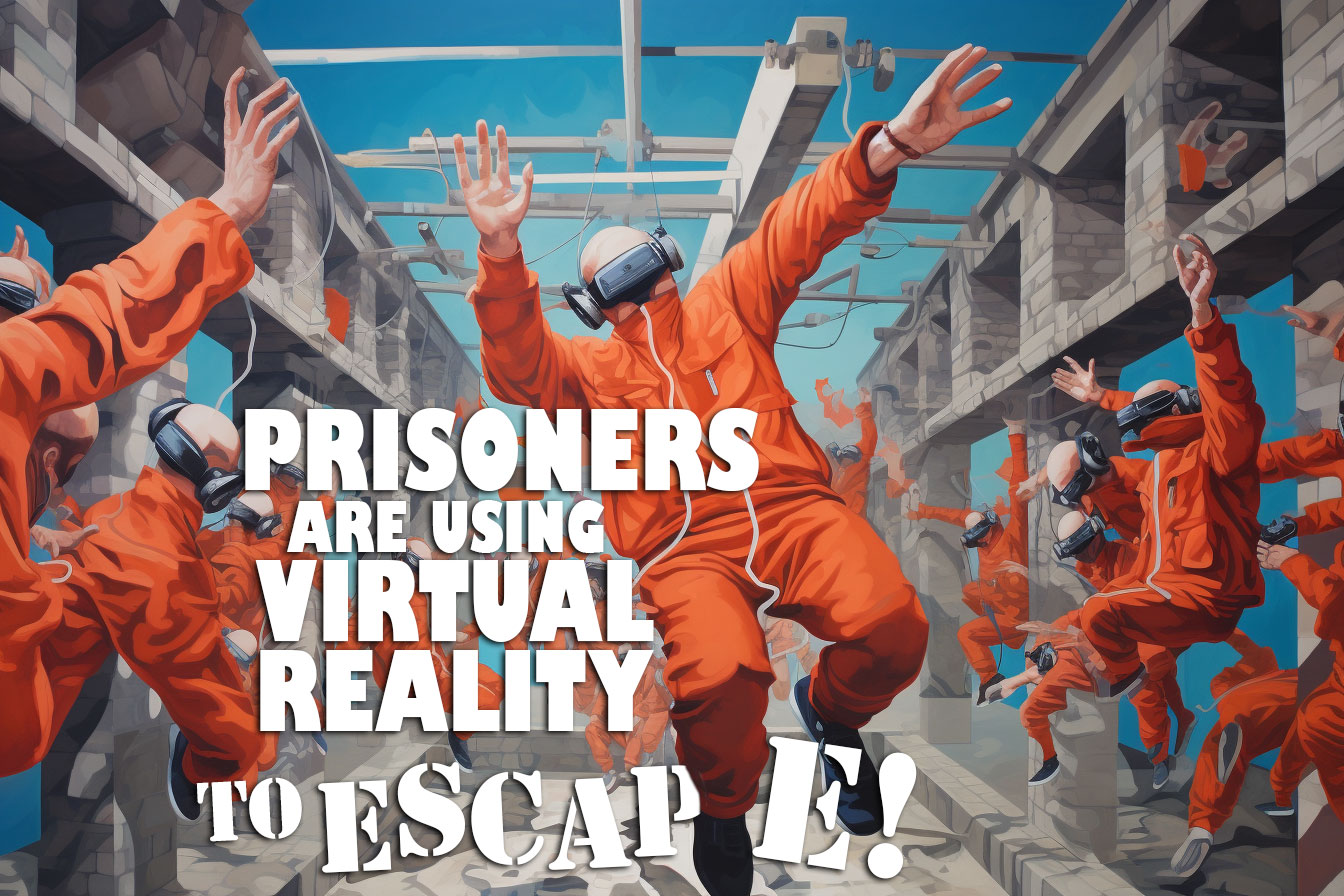
Prisoners are using Virtual Reality to ‘Escape’ Prisons
A brief overview of virtual reality
Virtual reality is a 3-D simulated experience that allows the user to learn, play, or experience situations in a life-like virtual environment. The user can engage with the software of their choosing anywhere. The fact that you can interact with endless amounts of experiences, all from the same setting is pretty cool. Now, when you consider a sparse environment like a prison, it becomes even more valuable.
Challenges in the prison system
Many of us know that prison serves a few vital purposes, like retribution, incapacitation, deterrence and rehabilitation. Those who have been convicted of crimes may have to serve various stints of time incarcerated. While generally, being punished for illegalities is welcomed in our society, it is also not without its problems. Those who have been in custody are more likely to experience recidivism; once convicted of an offense, the chances of re-offending rise significantly.
While this re-entry to society is not something ignored within the correctional system, there is a gender disparity commonly seen. Most re-entry programs are geared towards men; thus, when women are faced with reentering society, it can present many more challenges than for their male counterparts.
Gender aside, some of the issues faced with re-entry include, but are not limited to:
- Jobs are hard to come by, yet remain one of the most important factors in reducing the risk of recidivism. Many places won’t hire based on your criminal background, and if they do the job you get will not pay a living wage beyond the basic human necessities (food, shelter, healthcare, etc.)
- Support is sparse. While many organizations are popping up with the intent of fixing this, we have a long way to go. Plus, after an incarceration it is likely that social connections prior to incarceration will not be suitable for a new lease on life, or the strain of healthier relationships may further isolate the recently released.
“Under the supervision of correctional staff, prisoners can interact with various learning tools for social skills, emotional regulation skills, and so much more.”
Why Prisons Use Virtual Reality
We’ve talked a lot about how virtual reality can positively impact inmates, but what about correctional officers? The emergence of virtual reality in the prison systems has proven to be a cheap alternative to traditional training methods. There are a few factors that make virtual reality a solid choice for education and teaching valuable new skills to inmates:
- Realism – VR can offer life-like training experiences
- Immersion – Interaction is comparable to live training
- Safety – Much less can go wrong in a virtual setting
- Flexibility – This training can be done anywhere at any time
- Cost-effectiveness – Providing a location, instructors, and more is not necessary with VR
- Repetition – Officers can repeat trainings until they reach mastery
- Data Reporting – Progress can be monitored and used to increase quality in future trainings
How Both Prisons & Prisoners Benefit By Utilizing VR
Rehabilitation and Education:
Virtual reality can be used to provide educational and vocational training to inmates. This can help prepare them for reintegration into society upon release by acquiring new skills and improving their employability.
Therapeutic Interventions:
VR therapy has been explored as a tool for addressing issues such as anger management, substance abuse, and trauma. Inmates could use VR experiences to practice coping strategies or engage in therapeutic exercises.
Pre-release Preparation:
Virtual reality can offer inmates a simulated environment of the outside world to help them acclimate to life after prison. This can include tasks like grocery shopping, using public transportation, or finding employment.
Remote Visitation:
VR could be used to facilitate remote visitation for inmates, allowing them to interact with family and loved ones in a more immersive way, even if they are physically separated.
Reducing Recidivism:
Virtual reality can be employed to create immersive scenarios that teach inmates about the consequences of criminal behavior. These experiences may help reduce recidivism rates by promoting empathy and deterrence.
Mental Health Support:
VR can be used as a tool for mental health support within prisons. Inmates can use VR applications to practice mindfulness, manage stress, or participate in virtual therapy sessions.
Inmate Education and Skill Development:
Inmates can use VR for educational purposes, such as learning languages, acquiring new skills, or earning certifications that can be beneficial upon release.
Conflict Resolution Training:
VR simulations can be employed to train inmates in conflict resolution, communication skills, and anger management to reduce incidents of violence within the prison environment.
The Potential for VR in Correctional Facilities
Although VR is being used in some prisons across the country, it is not currently widespread. Places like New Mexico and Ohio are finding that this implementation may help lower aggression in inmates, increase empathy, and reduce the risk of future recidivism.
While this implementation won’t solve everything, it seems it will be beneficial for prisoners and prisons alike. The only way to know the potential is to continue exposing this new technology to inmates, ultimately seeing what outcomes are produced as a result. This is not an overnight shift; it will take time, money, and resources that may not be accessible in every situation.
It is important to note that the adoption of VR in prisons may face logistical and ethical challenges, including cost, security concerns, and issues related to access and equity. Furthermore, the implementation of such programs would require careful planning and oversight to ensure they serve their intended rehabilitative purposes. We will continue to monitor the prison system for further developments in how they are using virtual reality in prisons.


